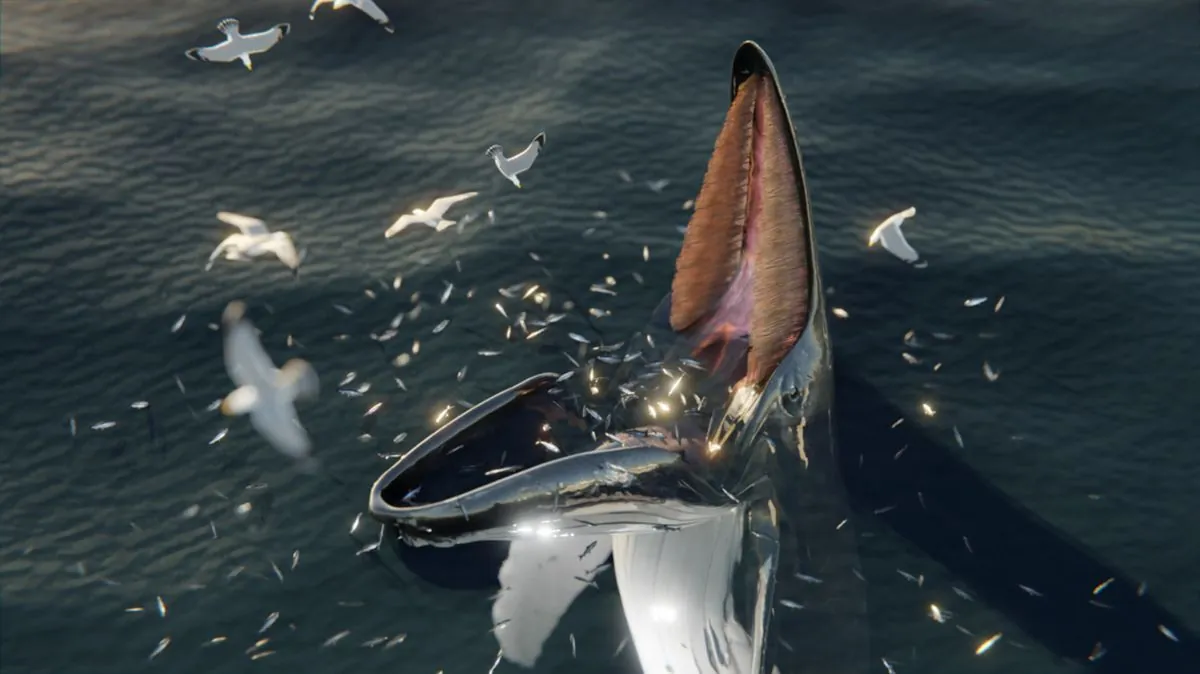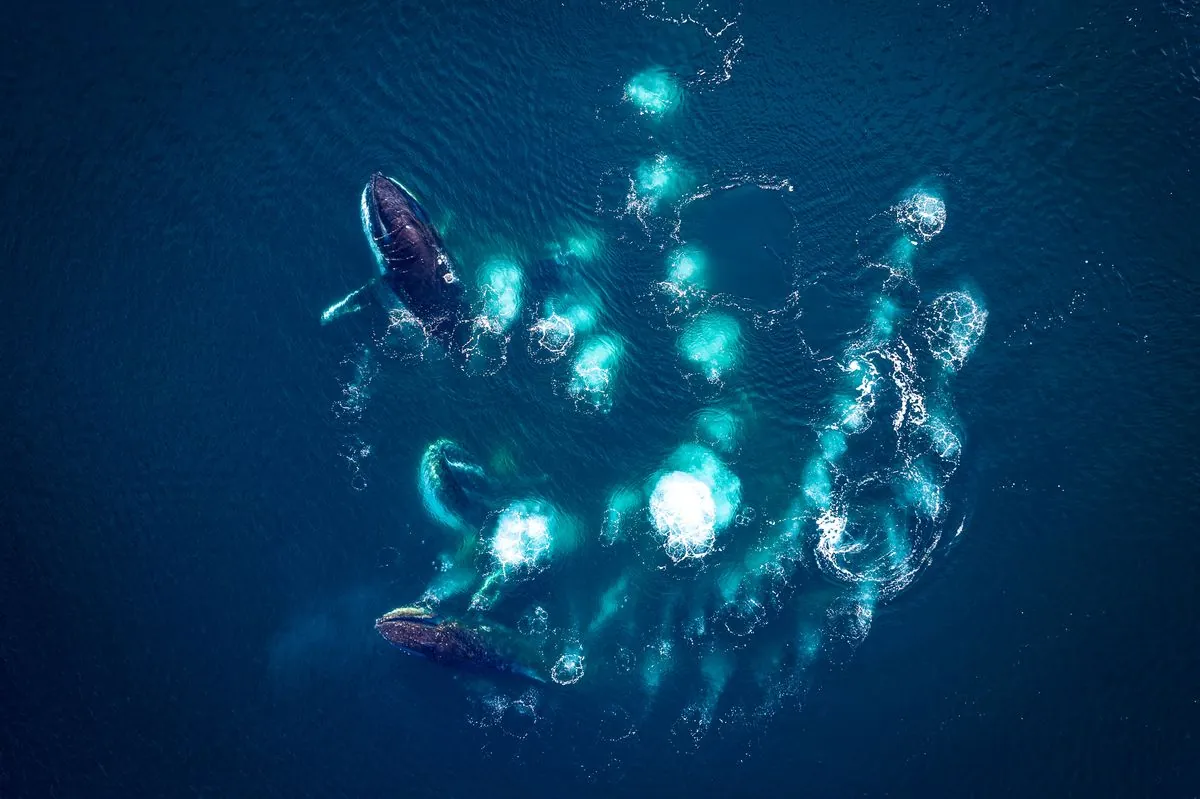Humpback Whale Accidentally Swallows Seal During Feeding Frenzy
A humpback whale inadvertently gulped a seal while feeding near Anacortes, Washington. The unusual incident, captured by a whale-watching naturalist, highlights the recovering population of these marine giants in the Salish Sea.

In an unexpected turn of events, a humpback whale accidentally swallowed a seal during a feeding session near Anacortes, Washington, on September 12, 2024. This unusual incident was captured by a whale-watching naturalist, providing a rare glimpse into the complexities of marine life interactions.
The event unfolded when a Blue Kingdom Whale and Wildfire Tours boat observed a humpback whale approaching a school of fish. Captain Tyler McKeen described the whale's feeding technique, known as lunge feeding, where the massive marine mammal opens its mouth wide to engulf small fish and water. Typically, humpbacks filter their catch through baleen plates, but in this case, the whale surfaced, repeatedly opening and closing its mouth.
Upon reviewing photographs and videos, the whale watchers made a startling discovery. Brooke Casanova's photograph revealed a seal emerging from the bottom of the whale's mouth, presumably caught while also hunting the same fish. McKeen recorded a video showing the seal being flushed out of the whale's mouth.
"It only took a couple seconds for everybody to pull up the frames and zoom in. That's when we saw the seal. It was a funny, funny moment for everybody. I mean, it probably wasn't that funny for the seal."
This incident sheds light on the complex feeding behaviors of humpback whales. These magnificent creatures, known for their distinctive body shape and long pectoral fins, can grow up to 52 feet in length and weigh up to 40 tons. Their diet primarily consists of krill and small fish, making the accidental ingestion of a seal a rare occurrence.

Humpback whales have been making a remarkable comeback in the Salish Sea, the inland waters between British Columbia and Washington state. Over the past 25 years, their population has been steadily recovering after being hunted to local extinction. This resurgence has allowed whale-watching tours to regularly spot these marine giants during their migrations.
The whale involved in this incident is affectionately known as "Big Mama" due to her history of being seen with seven different calves over the years. This fact aligns with the known reproductive patterns of humpback whales, as females typically give birth every 2-3 years after an 11-12 month gestation period.
The accidental swallowing of the seal also highlights the diverse ecosystem of the Salish Sea. Humpback whales play a crucial role in marine ecosystems by cycling nutrients and supporting other species. Their presence in these waters is a testament to conservation efforts and the resilience of nature.
As humpback whales continue to thrive in the Salish Sea, incidents like this serve as a reminder of the intricate balance in marine ecosystems. While such occurrences may be rare, they provide valuable insights into the lives of these magnificent creatures and the ongoing recovery of their populations.


































